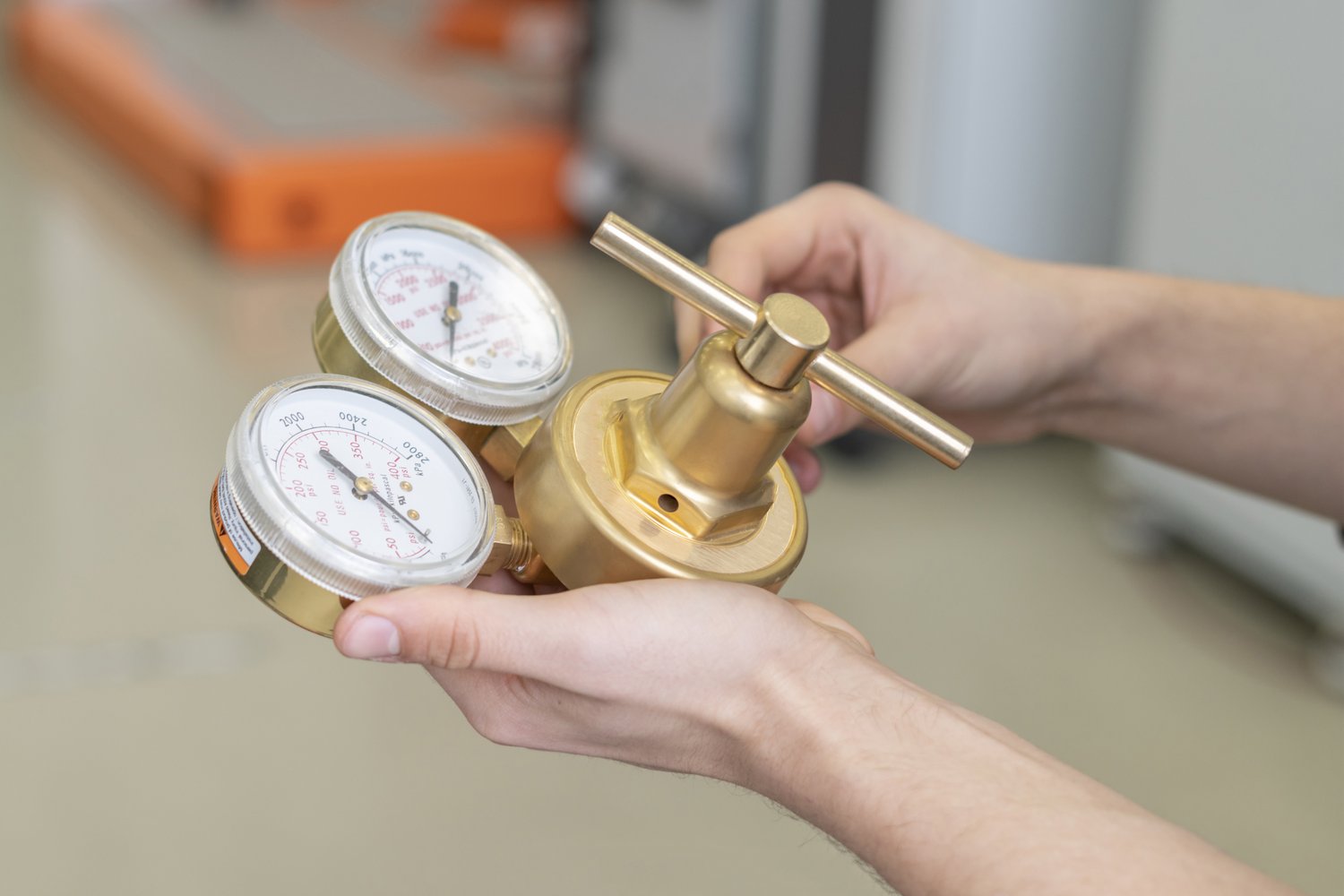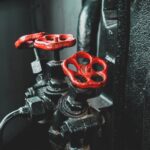When your morning shower turns from a soothing escape to a trickle of frustration, the culprit might be more than just a minor annoyance – it could lead to significant issues in your plumbing system. A well-functioning water pressure regulator is crucial for maintaining optimal water flow and preventing costly damage. Understanding the nuances of its operation can save you both time and money. Dive into this detailed guide to master the art of adjustment and installation, ensuring your home’s plumbing system operates smoothly and efficiently.
- Recognize the common symptoms of a failing water pressure regulator, such as fluctuating pressures and unusual sounds, to avoid potential damage to your plumbing.
- Learn basic troubleshooting steps to inspect and fix a malfunctioning regulator, helping you maintain your system’s integrity.
- Explore expert techniques for adjusting and installing a water pressure regulator, with an emphasis on safety and proper tool use.
- Discover crucial maintenance tips that can prevent future failures, ensuring consistent performance and a long lifespan for your regulator.
In uncovering the causes and solutions for water pressure issues, you’ll empower yourself to maintain a reliable and efficient plumbing system. This article equips you with the knowledge to make informed decisions, keeping the water flowing smoothly in your home.
Identifying Symptoms: Water Pressure Regulator Failures and Their Impact
Understanding the early signs of a faulty water pressure regulator is essential for maintaining an efficient plumbing system. One of the key indicators of failure is fluctuating water pressure. If you notice water pressure that varies unexpectedly, it could be a sign that the regulator is not functioning correctly.
Another common symptom to watch for is unusual noises coming from your plumbing. These noises could include banging or vibrating sounds, often referred to as ‘water hammer’. This occurs when the regulator fails to control the pressure effectively, causing pipes to shake.
Keep an eye on your water bills as well. A high water bill might suggest that the regulator is not managing the pressure as it should, leading to excessive water usage. Addressing these issues promptly can prevent further damage and costly repairs, ensuring your plumbing system remains efficient.
Basic Troubleshooting and Inspection Techniques
Before you replace your water pressure regulator, it’s important to conduct a thorough inspection to identify any potential issues. Begin by checking for leaks around the regulator and connected pipes. Leaks can lead to decreased water pressure and increased water bills, highlighting a potential fault in the system.
The next step is to inspect for residue buildup. Sediment and mineral deposits can accumulate and obstruct the regulator’s functionality, leading to inefficient water pressure management. Regular cleaning can mitigate this problem.
Additionally, ensure that the regulator valve operates properly. Manually test the valve to make sure it adjusts water flow smoothly. If it doesn’t function as expected, the regulator may require adjustment or replacement.
By utilizing these basic troubleshooting techniques, you can often rectify minor issues and extend the life of your water pressure regulator, maintaining a reliable and efficient plumbing system.
Water Pressure Regulator Failed? Adjustment and Installation Techniques Explained
When dealing with a failed water pressure regulator, it’s essential to understand both adjustment and installation techniques to ensure a well-functioning plumbing system. Properly adjusted and installed water pressure regulators not only maintain an optimal water pressure but also protect your plumbing system from potential damage.
Adjusting the Regulator Settings: Begin by checking the current water pressure using a pressure gauge. This will give you a baseline of your system’s performance. Water pressure regulators typically come with an adjustable screw or bolt. Use a wrench to rotate the adjustment screw clockwise to increase pressure or counterclockwise to decrease it. Make small adjustments and recheck the pressure regularly to avoid sudden spikes or drops.
Next, let’s dive into the installation process. Start by gathering the necessary tools, including a pipe wrench, Teflon tape, and a replacement water pressure regulator. Ensuring system integrity is paramount, so begin by shutting off the main water supply to prevent leaks and accidents.
Carefully remove the old regulator by loosening the fittings, taking note of its orientation and how it is connected. Apply Teflon tape to the threads of the new regulator to create a steady and leak-free connection. Install the new unit by securing the fittings tightly, following the previous orientation to maintain compatibility. After installation, gradually turn the water supply back on and monitor the system for any leaks or irregularities.
Safety Precautions: While performing adjustments or installations, always prioritize safety. Wear protective gloves and have all necessary tools on hand to facilitate a smooth, hassle-free process.
Maintenance Tips to Prevent Future Failures
To extend the lifespan of your water pressure regulator, regular maintenance is key. Consistent performance and efficiency depend on a well-maintained system. Here are some essential tips to keep your regulator in top condition:
Perform periodic pressure checks using a gauge to ensure the pressure is within the optimal range for your home. This will help identify any minor deviations before they become significant issues. Additionally, clean the regulator thoroughly at least once a year. Disconnect the unit and clear any debris or mineral buildup that may obstruct its function.
Look for any signs of wear, such as corrosion or deterioration of parts, and address these early on to avoid premature failure. For a more proactive approach, consider setting a reminder for regular inspection, especially if your area has hard water that may accelerate wear and tear.
By staying diligent with maintenance, you’ll ensure the efficient operation of your water pressure regulator and prevent disruptions in your home’s water supply.
Choosing the Right Water Pressure Regulator for Your Home
Selecting an appropriate water pressure regulator is crucial for maintaining optimal water pressure and ensuring the longevity of your plumbing system. In this comprehensive guide, we explore different types of water pressure regulators available in the market and provide tips for choosing the best model tailored to your specific plumbing needs.
Understanding the various options can help you make an informed decision and achieve a well-balanced water flow throughout your home.
Types of Water Pressure Regulators
Water pressure regulators come in several types, each designed to address different aspects of water regulation:
- Direct-acting regulators: These are the most common and are designed for small to medium water supply systems. They use a pressure relief and control mechanism to ensure a steady flow.
- Pilot-operated regulators: Suitable for high-demand systems, these regulators use a pilot valve to control the main valve, offering greater precision and stability in water pressure regulation.
- Pressure-reducing regulators: These are installed to lower high incoming water pressure to a safer and more usable level, preventing potential damage to plumbing fixtures.
Tips for Selecting the Best Water Pressure Regulator
When choosing the right regulator, consider the following factors:
1. Assess Your Water Pressure Needs: Measure the incoming water pressure to determine your specific requirements. Different homes have varying needs based on the number of fixtures and the building’s height.
2. Consider Flow Rate: Select a regulator with a suitable flow rate to ensure maximum efficiency without compromising performance, particularly for households with multiple outlets.
3. Material and Durability: Opt for regulators made from corrosion-resistant materials, such as brass or stainless steel. This ensures longevity and reliability in varying water conditions.
4. Size and Compatibility: Ensure the regulator fits well with your existing plumbing system. Consult manufacturer specifications to confirm compatibility and ease of installation.
5. Safety Features: Consider models with built-in safety features like thermal expansion relief valves, which prevent potential pressure build-up and system failure.
Choosing the right water pressure regulator not only consistent water flow but also reduces wear and tear on your plumbing. By considering your system’s unique needs and the product’s features, you can enhance efficiency and prolong the life of your plumbing infrastructure.
Frequently Asked Questions About Water Pressure Regulators
What is a water pressure regulator?
A water pressure regulator is a device that controls the pressure of water entering your home, ensuring it stays at a safe level.
How can I tell if my water pressure regulator is failing?
Signs include fluctuating water pressure, unusual noises, and increased water bills.
Can I adjust the water pressure regulator myself?
Yes, with the correct tools and precautions, you can adjust the regulator settings.
How often should I check my water pressure regulator?
It’s recommended to inspect it at least once a year for optimal performance.
What should I do if I find a leak in the regulator?
Turn off the main water supply and contact a professional plumber to assess the damage.
Are there different types of water pressure regulators?
Yes, there are different models, each suited for specific plumbing systems and requirements.





